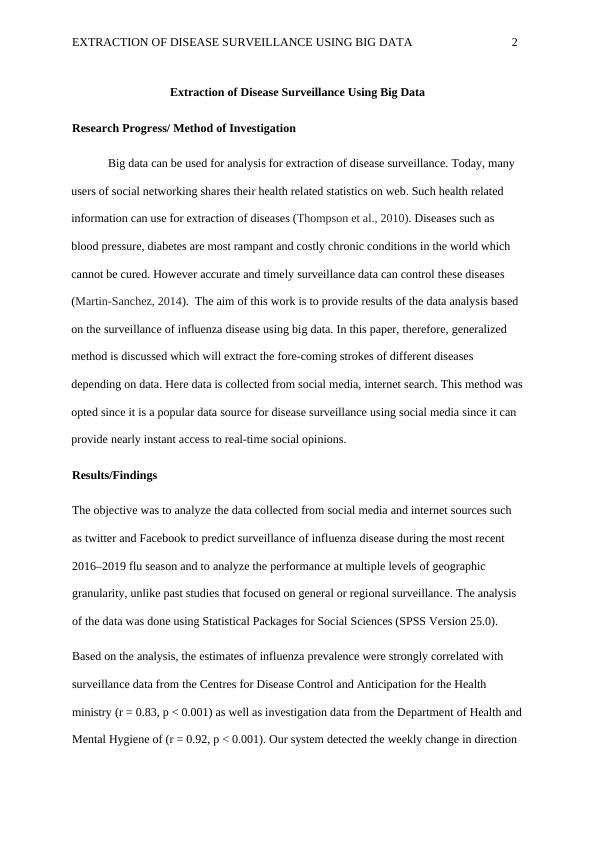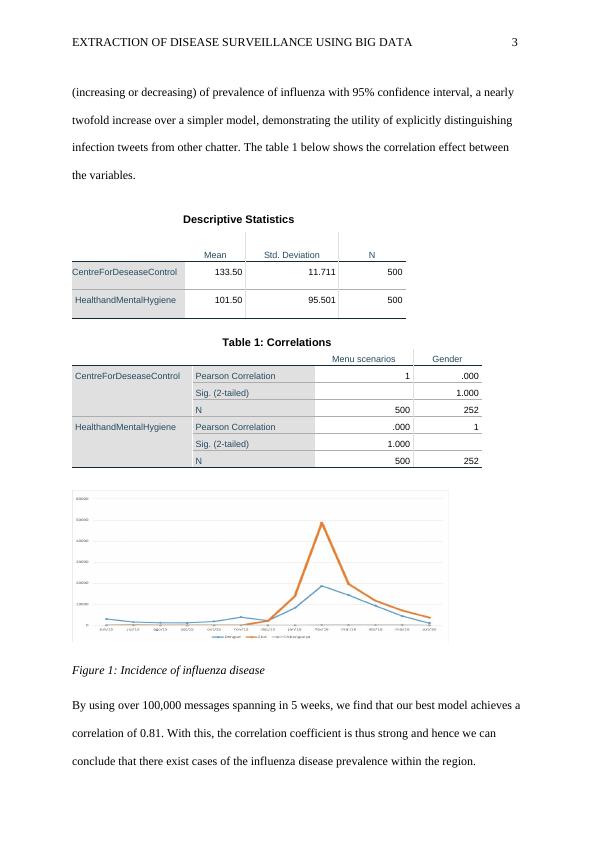Extraction of Disease Surveillance Using Big Data
Added on 2023-03-31
6 Pages881 Words161 Views
End of preview
Want to access all the pages? Upload your documents or become a member.
(PDF) The crime reduction effects of public cctv cameras
|11
|829
|270
Data Analysis: Types of Questions, Descriptive Analysis, Correct Statistical Tests
|25
|3407
|37
SPSS Analysis Project – Part 3
|24
|5780
|67
Descriptive Stats & Correlations
|6
|493
|390
SPSS Programme | Data Analysis Technique
|21
|3211
|62
Mindfulness: Findings, Analysis, and Conclusion
|17
|3008
|58



